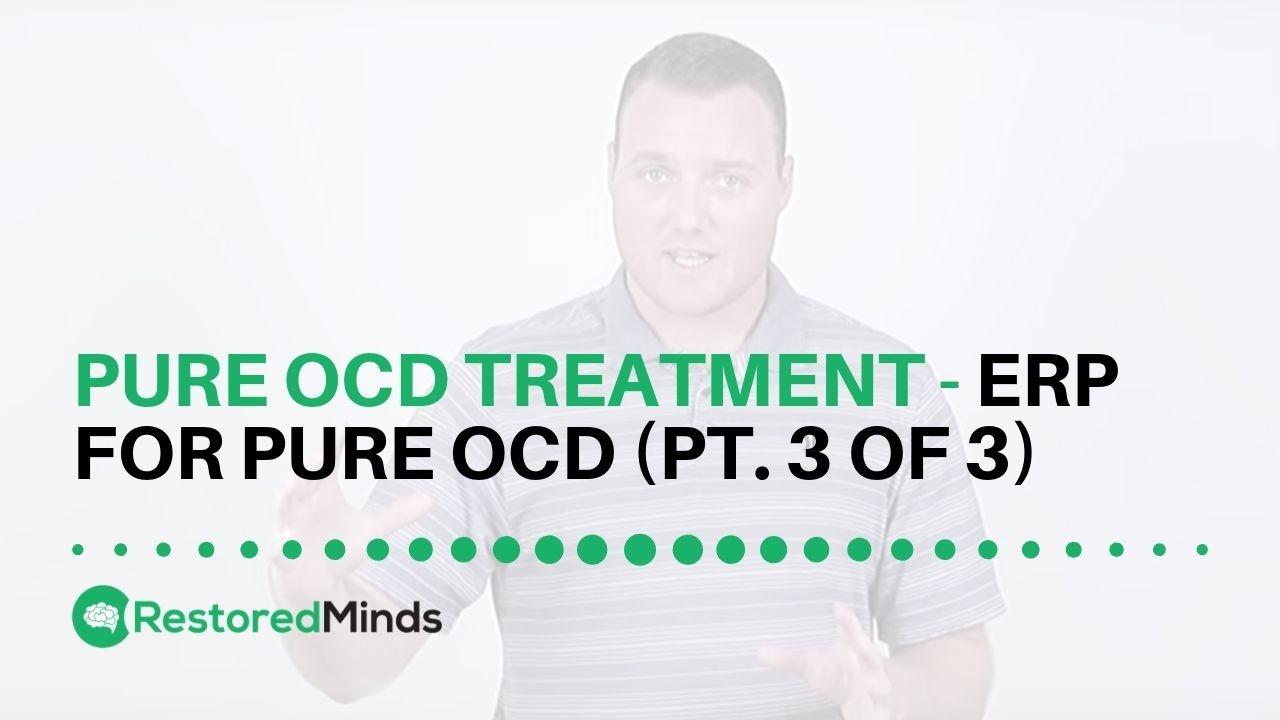Pure OCD Treatment - How to do ERP for Pure OCD
Jun 07, 2018
Title: Effective ERP Strategies for Treating Pure OCD
Introduction
Welcome to Restored Minds, a platform dedicated to helping individuals understand and manage their mental health challenges. In today's blog, we're diving deep into the third part of our video series on treating Pure OCD, led by licensed clinical social worker Matt Cotti. We will explore ERP (Exposure and Response Prevention) strategies specifically tailored for Pure OCD. Whether you’re familiar with the concept or new to it, you’ll find valuable insights that can aid your journey to recovery.
What is Pure OCD?
Before diving into ERP strategies, it's crucial to clarify what Pure OCD is. As Matt explains, the term “Pure OCD” is a bit of a myth because it suggests that individuals experience only obsessive thoughts without any compulsive behaviors. However, in reality, compulsions are almost always present, though they are often mental rather than physical.
Understanding Exposure and Response Prevention (ERP)
ERP is recognized as the gold standard for treating OCD. The core principle involves exposing yourself to the feared stimulus and then preventing the compulsive response that typically follows. In doing so, you allow your anxiety to habituate and thereby reduce the fear over time. As Matt states, while the process is straightforward in theory, it requires careful planning and execution, especially for Pure OCD.
Step-by-Step ERP Process for Pure OCD
-
Identify Your Obsessive Thoughts and Mental Compulsions
The first step in ERP for Pure OCD is to recognize your obsessive thoughts and understand the mental compulsions you engage in to neutralize these thoughts. For example, someone might repetitively try to reassure themselves mentally or avoid certain triggers.
-
Exposure to Obsessive Thoughts
Once you’ve identified your mental compulsions, the next step is exposure. Allow yourself to experience these obsessive thoughts without attempting to suppress them. The goal is to sit with the discomfort rather than pushing the thoughts away.
-
Response Prevention
As you expose yourself to the obsessive thoughts, it’s essential to prevent yourself from engaging in the mental compulsions. For instance, if you seek reassurance from family members, you must consciously choose not to ask for that reassurance. Matt highlights how crucial it is to systematically eliminate these behaviors.
-
Address Thought Suppression
One of the key components of ERP is addressing thought suppression. Allow the thoughts to exist without trying to push them away. This might feel counterintuitive, but it’s a pivotal step in breaking the OCD cycle.
-
Avoidance Behaviors
Another crucial aspect is avoiding avoidance! This means not steering clear of situations or triggers that spark your obsessive thoughts. Allowing these triggers and facing them head-on is an important exposure exercise.
Challenges and Tips for Success
While ERP is highly effective, it can also be challenging. Here are some tips to enhance your success:
-
Consistency is Key: Regularly practice ERP exercises. Consistent exposure will help habituate your anxiety more quickly.
-
Seek Professional Guidance: ERP can be complex, and having a licensed therapist like Matt guide you through the process can be invaluable.
-
Patience: Recovery doesn’t happen overnight. Give yourself grace and time to adapt to this new way of thinking and responding.
Conclusion
ERP for Pure OCD may initially seem daunting, but its effectiveness is backed by extensive research and real-world success stories. By methodically exposing yourself to feared stimuli and preventing compulsive responses, you break the cycle of OCD and gain newfound freedom over your thoughts and behaviors.


